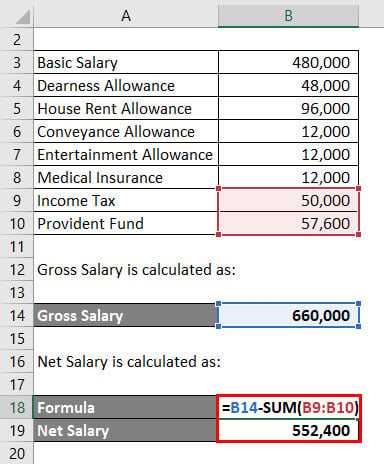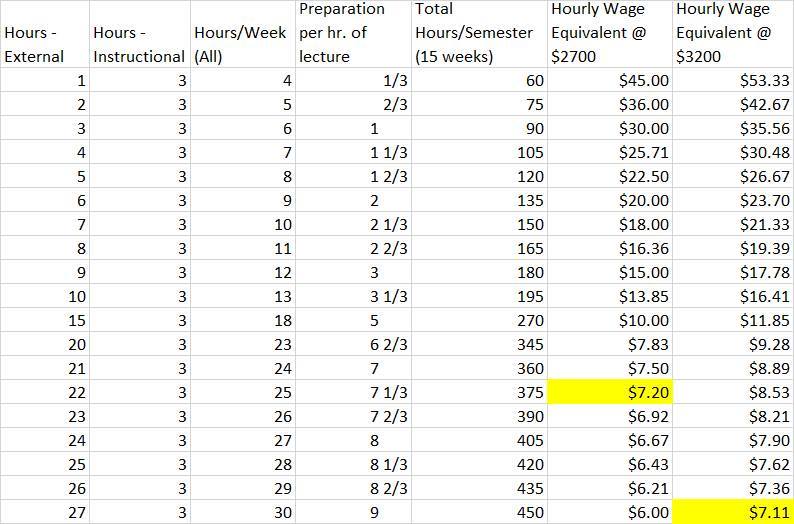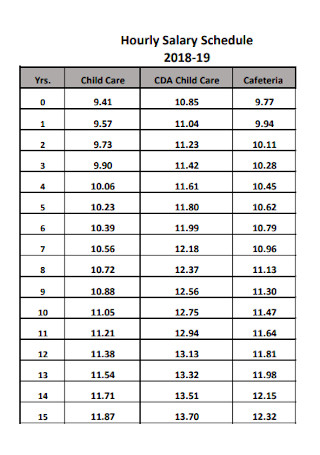What Does a $50 Hourly Wage Translate to in Terms of Annual Salary?
To determine the annual salary equivalent of a $50 hourly wage, it’s essential to consider the number of hours worked per week and the number of weeks worked per year. Assuming a standard full-time schedule of 40 hours per week and 52 weeks per year, the annual salary would be approximately $104,000 per year. However, this calculation does not take into account factors like overtime, bonuses, or benefits, which can significantly impact the total compensation package.
For part-time workers, the annual salary would be proportionally lower, depending on the number of hours worked per week. For example, if a part-time worker earns $50 per hour and works 20 hours per week, their annual salary would be around $52,000 per year.
It’s also important to note that the annual salary equivalent of a $50 hourly wage can vary significantly depending on the location. Cities with a high cost of living, such as New York or San Francisco, may require a higher hourly wage to maintain a similar standard of living. In contrast, cities with a lower cost of living, such as Des Moines or Omaha, may offer a lower hourly wage while still providing a comparable standard of living.
When searching for jobs or negotiating a salary, it’s crucial to consider the total compensation package, including benefits, bonuses, and overtime pay. This will provide a more accurate understanding of the annual salary equivalent of a $50 hourly wage and help individuals make informed decisions about their career and financial goals.
For those wondering, “how much salary is 50 dollars an hour,” the answer depends on various factors, including the number of hours worked, location, and benefits. However, as a general rule, a $50 hourly wage can translate to an annual salary ranging from $50,000 to over $100,000 per year, depending on the specific circumstances.
How to Calculate Your Monthly and Weekly Take-Home Pay
Calculating your monthly and weekly take-home pay based on a $50 hourly wage requires considering various factors, including taxes, health insurance, and other expenses. To estimate your take-home pay, you can use the following steps:
1. Determine your gross income: Multiply your hourly wage by the number of hours worked per week. For example, if you work 40 hours per week, your gross income would be $2,000 per week ($50/hour x 40 hours/week).
2. Calculate your federal income taxes: Use a tax calculator or consult with a tax professional to estimate your federal income taxes. For simplicity, let’s assume a 25% tax bracket, which would result in $500 per week in federal income taxes ($2,000/week x 0.25).
3. Calculate your state and local taxes: Depending on your location, you may also need to pay state and local taxes. For example, if you live in a state with a 5% state income tax, you would pay an additional $100 per week in state taxes ($2,000/week x 0.05).
4. Calculate your health insurance premiums: If you have health insurance through your employer, you may need to pay a portion of the premiums. Let’s assume a $100 per week premium.
5. Calculate your other expenses: You may have other expenses, such as retirement contributions, life insurance, or disability insurance. Let’s assume a total of $200 per week in other expenses.
6. Calculate your take-home pay: Subtract your taxes, health insurance premiums, and other expenses from your gross income to estimate your take-home pay. Based on the above calculations, your weekly take-home pay would be approximately $1,200 per week ($2,000/week – $500/week – $100/week – $100/week – $200/week).
To calculate your monthly take-home pay, simply multiply your weekly take-home pay by the number of weeks worked per month. For example, if you work 4 weeks per month, your monthly take-home pay would be approximately $4,800 per month ($1,200/week x 4 weeks/month).
When considering “how much salary is 50 dollars an hour,” it’s essential to factor in these deductions to get an accurate estimate of your take-home pay. By following these steps, you can better understand your monthly and weekly take-home pay and make informed decisions about your finances.
The Impact of Location on Your $50 Hourly Wage
The purchasing power of a $50 hourly wage can vary significantly depending on the location. Cities with a high cost of living, such as New York or San Francisco, may require a higher hourly wage to maintain a similar standard of living. In contrast, cities with a lower cost of living, such as Des Moines or Omaha, may offer a lower hourly wage while still providing a comparable standard of living.
For example, according to the Council for Community and Economic Research, the cost of living index in New York City is 146.4, compared to 91.7 in Des Moines. This means that $50 per hour in New York City has the same purchasing power as approximately $34 per hour in Des Moines.
Taxes also play a significant role in the impact of location on a $50 hourly wage. States with high income tax rates, such as California or New York, may reduce the take-home pay of a $50 hourly wage. In contrast, states with low or no income tax rates, such as Texas or Florida, may increase the take-home pay.
Regional economic conditions can also affect the purchasing power of a $50 hourly wage. Areas with a strong economy and high demand for skilled workers may offer higher hourly wages to attract and retain top talent. In contrast, areas with a weak economy or high unemployment rates may offer lower hourly wages.
When considering “how much salary is 50 dollars an hour,” it’s essential to factor in the impact of location on the purchasing power of the wage. By understanding the local cost of living, taxes, and economic conditions, individuals can make informed decisions about their career and financial goals.
In addition to the financial implications, location can also impact the quality of life and overall well-being of individuals earning a $50 hourly wage. Cities with a high cost of living may offer cultural and entertainment opportunities that are not available in smaller cities or rural areas. On the other hand, smaller cities or rural areas may offer a more relaxed pace of life and a stronger sense of community.
Ultimately, the impact of location on a $50 hourly wage is complex and multifaceted. By considering the various factors that affect the purchasing power of the wage, individuals can make informed decisions about their career and financial goals and achieve a better quality of life.
What Kind of Jobs Pay $50 an Hour?
Jobs that pay $50 an hour are often highly skilled and in-demand positions that require specialized knowledge and expertise. Some examples of industries and job types that may offer $50 hourly wages include:
1. Technology and software development: Jobs such as software engineers, data scientists, and IT project managers may pay $50 an hour or more, depending on the specific company and location.
2. Healthcare: Certain healthcare jobs, such as physicians, dentists, and pharmacists, may pay $50 an hour or more, especially those with specialized training and expertise.
3. Finance and banking: Jobs such as financial analysts, portfolio managers, and investment bankers may pay $50 an hour or more, depending on the specific company and location.
4. Consulting: Management consultants, strategy consultants, and IT consultants may pay $50 an hour or more, depending on the specific company and location.
5. Freelance and contract work: Freelance writers, designers, and developers may charge $50 an hour or more for their services, depending on their level of expertise and the specific project.
6. Skilled trades: Certain skilled trades, such as electricians, plumbers, and HVAC technicians, may pay $50 an hour or more, depending on the specific company and location.
7. Creative fields: Jobs such as graphic designers, photographers, and videographers may pay $50 an hour or more, depending on the specific company and location.
When considering “how much salary is 50 dollars an hour,” it’s essential to research the specific job market and industry to determine the average hourly wage for a particular position. This will help individuals understand the potential earning potential and make informed decisions about their career and financial goals.
In addition to these industries and job types, there are many other fields that may offer $50 hourly wages, depending on the specific company and location. It’s essential to research and stay up-to-date on the latest job market trends and salary ranges to ensure the best possible earning potential.
How to Negotiate a $50 Hourly Wage in Your Current Job
Negotiating a $50 hourly wage in your current job can be a challenging but rewarding experience. To increase your chances of success, it’s essential to research the market rate for your position and industry, highlighting your value to the company, and preparing for the conversation.
Researching the market rate for your position and industry is crucial in determining a fair hourly wage. Websites such as Glassdoor, Payscale, and LinkedIn can provide valuable insights into the average hourly wage for your position and industry. Additionally, networking with colleagues and industry professionals can also provide valuable information on market rates.
Highlighting your value to the company is also essential in negotiating a $50 hourly wage. Make a list of your achievements and contributions to the company, including any successful projects, positive feedback from coworkers or supervisors, and any additional responsibilities you’ve taken on. This will help demonstrate your worth to the company and justify a higher hourly wage.
Preparing for the conversation is also crucial in negotiating a $50 hourly wage. Schedule a meeting with your supervisor or HR representative and come prepared with your research and list of achievements. Be confident and assertive during the conversation, and be open to negotiation and compromise.
When considering “how much salary is 50 dollars an hour,” it’s essential to remember that negotiation is a give-and-take process. Be flexible and willing to compromise, but also be clear and direct about your expectations. Remember, the worst that can happen is that your employer says no, but the best that can happen is that you secure a higher hourly wage and improve your financial stability.
In addition to researching the market rate and highlighting your value, it’s also essential to consider the timing of your negotiation. Ask for a raise during your performance review, or at the end of the year when bonuses are typically given. This can increase your chances of success and demonstrate your value to the company.
Finally, be prepared to discuss the benefits of a $50 hourly wage, including increased financial security, improved work-life balance, and career advancement opportunities. This will help demonstrate the value of a higher hourly wage to the company and justify the increase.
The Benefits of a $50 Hourly Wage: Is it Worth It?
Earning a $50 hourly wage can have a significant impact on one’s financial stability and overall well-being. However, it’s essential to weigh the pros and cons of earning this wage to determine if it’s worth it.
One of the most significant benefits of a $50 hourly wage is the potential for increased financial security. With a higher hourly wage, individuals can afford to pay their bills on time, save for the future, and enjoy a better quality of life. Additionally, a $50 hourly wage can provide a sense of financial freedom, allowing individuals to pursue their passions and interests without worrying about money.
Another benefit of a $50 hourly wage is the potential for improved work-life balance. With a higher hourly wage, individuals may be able to work fewer hours and still earn a decent income, allowing them to spend more time with family and friends, pursue hobbies, and enjoy a better work-life balance.
A $50 hourly wage can also provide career advancement opportunities. With a higher hourly wage, individuals may be able to take on more responsibilities, pursue promotions, and advance in their careers. Additionally, a $50 hourly wage can provide a sense of prestige and respect, allowing individuals to feel more confident and self-assured in their careers.
However, there are also potential drawbacks to earning a $50 hourly wage. For example, a higher hourly wage may lead to increased taxes, which can reduce take-home pay. Additionally, a $50 hourly wage may not be sustainable in all industries or locations, and individuals may need to consider the cost of living and other expenses when determining if a $50 hourly wage is worth it.
When considering “how much salary is 50 dollars an hour,” it’s essential to weigh the pros and cons of earning this wage and determine if it’s worth it. While a $50 hourly wage can provide many benefits, it’s crucial to consider the potential drawbacks and determine if it’s sustainable in the long term.
Ultimately, whether or not a $50 hourly wage is worth it depends on individual circumstances and priorities. However, by considering the pros and cons of earning this wage, individuals can make informed decisions about their careers and financial goals.
How to Make the Most of Your $50 Hourly Wage
Earning a $50 hourly wage can provide a significant increase in income, but it’s essential to make the most of this wage to achieve long-term financial stability and success. Here are some tips on how to maximize the benefits of a $50 hourly wage:
1. Create a budget: Start by creating a budget that accounts for all your income and expenses. This will help you understand where your money is going and make informed decisions about how to allocate your resources.
2. Save for the future: With a $50 hourly wage, you may be able to save more money for the future. Consider setting up a retirement account or saving for a down payment on a house.
3. Invest wisely: Investing your money wisely can help you grow your wealth over time. Consider working with a financial advisor to develop an investment strategy that aligns with your goals and risk tolerance.
4. Pay off debt: If you have high-interest debt, such as credit card debt, consider using your $50 hourly wage to pay off these debts. This can help you save money on interest payments and free up more money in your budget for savings and investments.
5. Build an emergency fund: Having an emergency fund in place can help you cover unexpected expenses and avoid going into debt. Aim to save three to six months’ worth of living expenses in an easily accessible savings account.
When considering “how much salary is 50 dollars an hour,” it’s essential to think about how you can make the most of this wage to achieve your long-term financial goals. By following these tips, you can maximize the benefits of a $50 hourly wage and set yourself up for financial success.
In addition to these tips, it’s also essential to consider the tax implications of a $50 hourly wage. You may need to adjust your withholding or make estimated tax payments to avoid owing taxes when you file your return.
Finally, remember that a $50 hourly wage is just a starting point. As you gain more experience and skills, you may be able to negotiate a higher wage or pursue new opportunities that offer even greater financial rewards.
Conclusion: Turning Your $50 Hourly Wage into Long-Term Financial Success
In conclusion, a $50 hourly wage can be a significant step towards achieving long-term financial stability and success. However, it’s essential to consider the various factors that affect the purchasing power of this wage, including location, taxes, and benefits.
By understanding how to calculate the annual salary based on a $50 hourly wage, how to negotiate a $50 hourly wage in your current job, and how to make the most of this wage, you can unlock the value of a $50 hourly wage and achieve your financial goals.
Remember, a $50 hourly wage is just a starting point. With the right mindset, skills, and strategies, you can continue to grow your income and achieve long-term financial success.
When considering “how much salary is 50 dollars an hour,” it’s essential to think about the big picture and how this wage can fit into your overall financial plan. By doing so, you can make informed decisions about your career and finances and achieve your goals.
In the end, a $50 hourly wage is not just a number; it’s a key to unlocking your financial potential and achieving long-term financial stability and success. By following the tips and strategies outlined in this article, you can turn your $50 hourly wage into a long-term financial success story.







